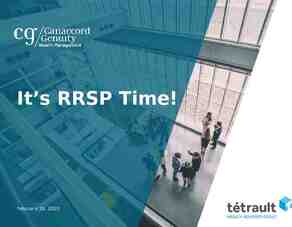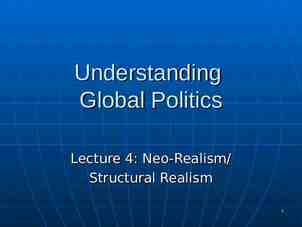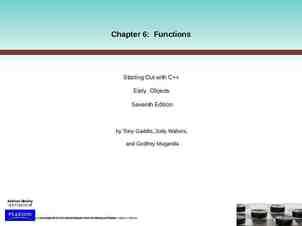1 Molecular Size Dependent Fall-off Rate Constants for the
24 Slides1.72 MB

1 Molecular Size Dependent Fall-off Rate Constants for the Recombination Reactions of Alkyl Radicals with O2 Department of Chemical Systems Engineering, University of Tokyo Akira Miyoshi 7th ICCK (MIT, Cambridge) July 11, 2011

2 Introduction — R (alkyl) O2 key reactions that lead to chain branching in low-temperature oxidation of hydrocarbons — Challenges resolution of complicated pressure- and temperature- dependent product specific rate constants including second O2 addition reactions to QOOH — Objectives evaluation of universal fall-off rate expression for recombination master equation analysis for the dissociation/recombination steady-state

3 Computational

4 Computational — Quantum Chemical Calculations B3LYP & CBS-QB3 calculations by Gaussian 03 CASPT2 calculations by MOLPRO 2008.1 — TST and VTST Calculations by GPOP* including: Pitzer-Gwinn approximation for hindered rotors, qPG (after analysis by BEx1D*) 1D tunneling correction (asymmetric Eckart), κtun rotational conformer distribution partition function, qRCD — RRKM/ME Calculations ρ(E) and k(E) accounting for all TST feature (qPG, κtun, and qRCD) by modified UNIMOL RRKM program steady-state & transient master equation calculations by SSUMES* * http://www.frad.t.u-tokyo.ac.jp/ miyoshi/tools4kin.html

5 Hindered Rotor (carbon-centered radical) — Pitzer-Gwinn Approximation partition function calculated from eigenstate energies, qexact, is well approximated by qPG(V0 100 cm–1) or qFR (free rotor)

6 Hindered Rotor (RO2) — Taken into Account as Rotational Conformers partition function calculated from eigenstate energies, qexact, is well approximated by 2qHO qHO' or qHOqRCD

7 Rotational Conformers — Taken into Account via Partition Function rotational conformer distribution partition function, qRCD qtot qi exp i kT i by assuming qi q0 qtot qRCD q0 qRCD gi exp i kT i

8 Molecular Size Dependent Fall-off Rate Constants

9 Potential Energy Curves CASPT2(7,5)/aug-cc-pVDZ // B3LYP/6-311G(d,p) potential energy well reproduced experimental k(300 K) within 25% R (alkyl) O2 RO2 B3LYP/6-311G(d,p) potential energy systematically underestimated k(300 K) Rate Constants for R O2 RO2 R C2H5 i-C3H7 n-C4H9 s-C4H9 t-C4H9 k (300 K) / 10–11 cm3 molecule–1 s–1 exp. CASPT2 (%err) B3LYP (%err) 0.780 0.728 (–7) 0.411 (–47) 1.41 1.25 (–11) 0.829 (–41) 0.750 0.921 ( 23) 0.354 (–53) 1.66 1.26 (–24) 0.426 (–74) 2.34 2.50 ( 7) 1.73 (–26)

10 High-Pressure Limiting Rate Constants, k — Size-Independent same for secondary R's same for primary R's — Class-Specific class (primary, secondary, or tertiary) determines the rate constant

11 Fall-off Calculations — Energy Transfer Model experimental data for C2H5 O2 in fall-off region were well reproduced by the exponential-down model with: T 400 1 1000 K cm Plumb & Ryan, Int. J. Chem. Kinet., 1981, 13, 1011; Slagle et al., J. Phys. Chem., 1984, 88, 3648; Wagner et al., J. Phys. Chem., 1990, 94, 1853. 0.7

12 Low-Pressure Limiting Rate Constants, k0 — Size-Dependent — Class-Independent same for three C4 R's irrespective of class (primary, secondary, or tertiary)

13 Size-Dependent Expression for k0 Parameters for modified Arrhenius Expression: k0 A T b exp(–Ea / RT ) nHA number of heavy (non-hydrogen) atoms — Universal Fall-off Rate Constants for R O2 class-specific k size-dependent k0

14 Collapse of Steady-State Assumption? ?

15 Steady-State Distribution of Large RO2 steady-state distribution for dissociation? rump distribution after major part has gone steady-state distribution for chemical-activation Boltzmann distribution Collapse of steady-state assumption or LindemannHinshelwood type mechanism RO2 RO2 * R O2 R O 2 RO2 * RO2 k k at high temperatures (Miller and Klippenstein, Int. J. Chem. Kinet., 2001, 33, 654–668)

16 Dissociation/Recombination Steady-State

17 R O2 RO2 Partial Equilibrium — Dissociation/Recombination Steady-State more general condition where near F(E) is established Chemical activation steady state d n Jn kin r 0 dt where r(E) 1 kdis, kd ( E ) F ( E ) When other channels are not present, there is trivial solution n( E ) kin kdis, F (E) Boltzmann distribution

18 Dissociation/Recombination Steady-State — Near Boltzmann Distribution rate constants for subsequent isomerization/dissociation reactions of RO2 can be estimated to be in near high-pressure limit

19 Three "Steady-States" "delayed" "prompt" Miller and Klippenstein, Int. J. Chem. Kinet., 2001, 33, 654–668. Clifford, Farrell, DeSain and Taatjes, J. Phys. Chem. A, 2000, 104, 11549–11560.

20 2 HO2 formation in C2H5 O C2H5O2 k(HO2) k (HO2) at moderate T but in partial equilibrium of R O2 RO2 Experimental data by Clifford, Farrell, DeSain and Taatjes, J. Phys. Chem. A, 2000, 104, 11549–11560.

21 Time Dependent Solution Time-dependent solution for d n Jn kin r dt with n0 0 and kin const. Nearly the same with and without concerted HO2 elimination channel Build-up time kdis,FO–1

In Autoignition Modeling T/K near partial equilibrium mole fraction 22 3000 2000 1000 10 -2 10 -3 n-C7 H16 /air 1, 10 -4 720 K, 20 atm 10 -5 10 -6 3-C7H15O2 10 -7 10 -8 10 -9 10 -10 3-C7H15 -11 10 10 -12 OH 10 -13 0 1 2 t / ms transient 3

23 Building-Up Transient for C8H17O2 build-up of F(E) with bu–1 kdis,FO kdis, build-up of F(E) with bu–1 kdis,FO kdis, (0.01atm) bimodal build-up (10–6 atm) collision-free build-up of F(E) with bu–1 kdis, kdis,FO

24 Summary — Size-Dependent Fall-Off Rate Constants for R O 2 VTST and RRKM/ME calculations for R C2H5, i-C3H7, n-C4H9, s-C4H9, t-C4H9, n-C6H13, and i-C8H17 k is class-specific but size-independent k0 is size-dependent but class-independent Universal fall-off rate expression for arbitrary R O2 — Collapse of Steady-State Assumption For large RO2 at high temperatures — Dissociation/Recombination Steady-State nss(E) F(E) for RO2 in partial equilibrium with R O2 HPL(k ) can be assumed for subsequent reactions of RO2 build-up time kdis,FO–1 at low T –1 kdis, at high T irrespective of P dis, bimodal build-up at midium T especially at low P






